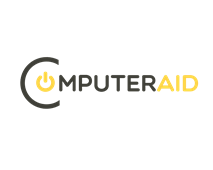
Introduction
Within project management, project controls play a crucial role. Controls help teams understand and influence the time and costs spent on projects. Project controls are essential for:
- Staying within project scope
- Minimising budget overruns
- Adhering to schedules.
This article will explore the definition and importance of project controls, examining key techniques and implementation strategies. We’ll discuss the benefits of effective control processes and their impact on project success. Additionally, we’ll look at tools, software, and career opportunities in this field. By the end, you’ll have a comprehensive understanding of how project controls can enhance your project management approach.
Understanding project controls
Comprehensive definition
Project controls are systematic processes used to gather data, manage information, and analyse outcomes. They help predict, comprehend, and constructively influence time and cost aspects of projects. These controls provide essential insights for effective decision-making throughout a project’s lifecycle.
Role within project management
Within project management, project controls act as a navigational system. They guide project managers by:
- Providing accurate status updates
- Forecasting potential outcomes
- Identifying deviations from plans
- Suggesting corrective actions.
Key components of project controls
Essential components include:
- Planning and scheduling
- Cost estimation and management
- Risk assessment and mitigation
- Change control processes
- Performance monitoring and reporting.
Differences between project controls and project management
While project management oversees the entire project, project controls focus specifically on:
- Time and cost aspects
- Data analysis and reporting
- Performance measurement
- Predictive modelling.
Project controls support project management by providing detailed insights and recommendations. This enables project managers to make informed decisions and steer projects towards successful completion.
Essential project control techniques
Schedule management
Timeline development
Effective timeline development involves creating a comprehensive project schedule. This includes identifying tasks, estimating durations, and establishing dependencies. Use tools like Gantt charts to visualise the project timeline and critical path.
Milestone tracking
Milestone tracking helps monitor progress against key project objectives. Regularly review and update milestones to ensure the project remains on track. This technique provides clear indicators of project health and progress.
Cost control
Budget planning
Budget planning involves estimating and allocating resources for each project phase. Develop a detailed budget that accounts for all anticipated expenses, including labour, materials, and contingencies.
Cost variance analysis
Perform regular cost variance analysis to compare actual expenditures against the planned budget. This helps identify discrepancies early and allows for timely corrective actions.
Risk management
Risk identification
Conduct thorough risk identification sessions to uncover potential threats to project success. Involve stakeholders from various disciplines to ensure comprehensive risk assessment.
Mitigation strategies
Develop mitigation strategies for identified risks. Prioritise risks based on their potential impact and likelihood, then create action plans to address them proactively.
Change control
Scope management
Implement robust scope management processes to prevent unauthorised changes. Clearly define project boundaries and deliverables in the initial planning phase.
Change request processes
Establish formal change request processes to evaluate and approve necessary modifications. This ensures that all changes are properly assessed, documented, and implemented.
Performance management
Key Performance Indicators (KPIs)
Define relevant KPIs to measure project progress and success. Regularly monitor these indicators to gauge project health and identify areas for improvement.
Earned Value Management (EVM)
Implement Earned Value Management techniques to assess project performance objectively. This method integrates scope, schedule, and cost metrics to provide a holistic view of project status.
Implementing project controls
Project planning phase
Establishing baselines
Begin by setting clear project baselines for scope, schedule, and budget. These baselines serve as reference points for measuring progress throughout the project lifecycle. Ensure all stakeholders agree on these foundational elements before proceeding.
Defining roles and responsibilities
Clearly outline roles and responsibilities for project control activities. Create a responsibility matrix that assigns specific tasks to team members. This clarity helps prevent confusion and ensures comprehensive coverage of control functions.
Project execution phase
Monitoring and reporting
Implement robust monitoring systems to track project performance against established baselines. Develop standardised reporting templates that capture key metrics and variances. Regular reporting helps maintain transparency and facilitates timely decision-making.
Corrective action implementation
When deviations are identified, swiftly implement corrective actions. Establish a process for evaluating and approving proposed solutions. Ensure that all corrective measures align with project objectives and stakeholder expectations.
Project closure phase
Post-mortem analysis
Conduct a thorough post-mortem analysis to evaluate the effectiveness of project controls. Assess the accuracy of initial estimates, the impact of risk mitigation strategies, and the overall project performance.
Lessons learned documentation
Document lessons learned from the project control process. Identify successful practices and areas for improvement. Share these insights across the organisation to enhance future project control efforts.
By implementing project controls systematically across all project phases, you can significantly improve project outcomes and organisational learning.
Benefits of effective project controls
Improved project visibility
Implementing robust project controls significantly enhances project visibility. They provide real-time insights into project status, performance metrics, and potential issues. This transparency allows project managers to maintain a comprehensive overview of all project aspects.
Enhanced decision-making
With accurate and timely information, project controls facilitate informed decision-making. Managers can quickly identify trends, anticipate challenges, and make data-driven choices. This proactive approach minimises risks and maximises project outcomes.
Increased project success rates
Effective project controls directly contribute to higher project success rates. By closely monitoring progress and swiftly addressing deviations, teams can consistently meet project objectives. This leads to improved stakeholder satisfaction and organisational reputation.
Cost and time savings
Project controls help optimise resource allocation, resulting in substantial cost and time savings. Early issue detection and resolution prevent costly overruns and delays. Efficient resource management ensures optimal utilisation throughout the project lifecycle.
Better stakeholder communication
Project controls provide a solid foundation for stakeholder communication. Regular, data-driven reports keep all parties informed about project progress, challenges, and achievements. This transparency fosters trust and alignment among stakeholders, contributing to smoother project execution.
Project control tools and software
Popular project management tools
Many project management platforms offer integrated project control features. Tools like Microsoft Project, Asana, and Jira provide capabilities for scheduling, resource allocation, and progress tracking. These solutions often include customisable dashboards for monitoring key metrics.
Specialised project control software
For more advanced needs, dedicated project control software is available. Primavera, Deltek Cobra, and EcoSys offer sophisticated functionalities for cost control, earned value management, and risk analysis. These tools cater to complex projects across various industries.
Integrating tools into existing workflows
Successful implementation of project control tools requires thoughtful integration into existing processes. Consider these five steps:
- Assess current workflows and identify gaps
- Select tools that align with organisational needs
- Provide comprehensive training for team members
- Establish clear protocols for data input and analysis
- Regularly review and optimise tool usage.
By carefully selecting and integrating appropriate tools, organisations can significantly enhance their project control capabilities and overall project performance.
Career opportunities in project controls
Roles and responsibilities
Project control professionals play crucial roles in ensuring project success. Common positions include Project Control Analyst, Cost Engineer, and Planning Scheduler. These roles involve monitoring project performance, analysing data, and providing strategic recommendations.
Required skills and qualifications
Successful careers in project controls require:
- Strong analytical and problem-solving abilities
- Proficiency in project management software
- Excellent communication skills
- Relevant certifications (e.g., PMP, CCP).
Career progression paths
Career progression often leads to senior roles such as Project Control Manager or Director of Project Controls. With experience, professionals may transition into broader project management or executive positions, overseeing multiple projects or programmes.
Conclusion
Project controls are essential for modern project management success. They provide crucial insights, enhance decision-making, and improve project outcomes. By implementing effective control techniques and leveraging appropriate tools, organisations can significantly increase their project success rates. Embracing project controls is vital for staying competitive in today’s complex business environment.
FAQs
What is the main purpose of project controls?
Project controls aim to predict, understand, and influence time and cost outcomes of projects.
How do project controls differ from project management?
Project controls focus specifically on data analysis and performance measurement, while project management oversees the entire project lifecycle.
What are the key skills needed for a career in project controls?
Analytical thinking, proficiency in project management software, and strong communication skills are essential.
Can project controls be applied to small-scale projects?
Yes, project controls can be scaled and adapted for projects of any size.
How often should project controls be reviewed and updated?
Regular reviews are crucial, typically conducted weekly or monthly depending on project complexity.
What are the common challenges in implementing project controls?
Resistance to change, data accuracy issues, and lack of standardised processes are frequent obstacles.
Infographic









